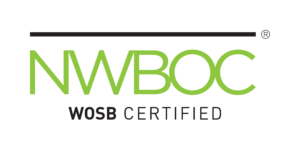Courtesy of OurPublicService.org
There is one question that federal managers consistently ask me: “How do I become an SES?”
Created by Congress in 1978, the Senior Executive Service (SES) is a 7,000 member elite cadre of federal leaders who are performing cutting-edge work and delivering vital services, from protecting the homeland to revitalizing our economy.
If you are striving to become a member of this elite corps, start by examining the Office of Personnel Management’s Executive Core Qualifications (ECQs). The five ECQs–leading change, leading people, results driven, business acumen and building coalitions–are designed to assess your executive experience and potential.
The ECQs are a great road map for your leadership development; however, to enhance your qualifications, it’s important that you also gain broad experience and training. The SES federal employees that I interact with all have had very diverse leadership experiences and training, which have enabled them to develop into the leaders that they are today.
To help you on your path to the SES, I consulted with agency colleagues who have served in the SES for some insider advice. Here are their tips on how federal leaders can become senior government executives:
- Do your homework. Take time to understand the ECQs and to honestly evaluate yourself relative to them. You will also want to familiarize yourself with the agencies’ Executive Resources Boards (ERBs) and Qualifications Review Boards (QRBs), which are keys to the SES recruitment and selection process. Yes, it’s an alphabet soup, but they’re the rules of the game.
- Let your agency know you’re interested. Don’t assume that your senior executives can read your mind. Express your interest in the SES and have a conversation around what it will take for you to become an executive.
- Get moving. Leaders chart their own course. To demonstrate the ECQs, you’ll need a broad base of experience and a strong network. Leadership development programs can help you too. If your supervisor wants to reward you for a job well done, instead of a small bonus, consider asking for an opportunity to attend a management development program. Become active in a professional association, volunteer for an inter-agency task force and constantly read leadership books and articles to help develop your strengths and identify your weaknesses.
- Set personal-growth stretch goals, and meet them. For example, write and submit an article or an op-ed for a professional journal, volunteer to speak at a conference or suggest a new agency project then volunteer to lead or implement the effort.
- Find mentors. Seek out successful agency leaders that you respect to find out what has helped them become successful and, especially, how they overcame adversity.
- Know when it’s time to move on. While you might be able to stay in one organization for most of your career and rise to the top, senior leaders are increasingly seeking people with experience in multiple organizations and work environments when filling their senior positions. To advance, you may need to move out of your comfort zone.
Finally, this last piece of advice is perhaps the best: become the best at what you do and then don’t stop there.
Senior executives, how did you make it into the SES? What advice and tips do you have for federal managers interested in the process? Please let me know by either posting your comments online or sending an email to fedcoach@ourpublicservice.org.
Barbara Adams, President & CEO of CareerPro Global, the parent company of
www.seswriters.com,
www.careerproplus.com, and
www.militaryresumewriters.com,
one of the fastest growing Federal, Military, and Civilian Resume Writing and Career Coaching companies in the world.
Ms. Adams has been a member of the careers community for the past 18 years.
She holds four prestigious industry certifications.
Questions may be emailed to badams@careerprocenter.net


